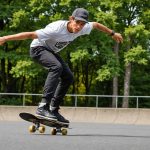Overview of Visualization Strategies
Visualization techniques have become essential in sports, providing significant performance enhancement through mental training. In essence, visualization involves mentally rehearsing an activity in the mind, using sensory experiences related to that activity. This practice dates back decades, but it gained increased traction in the 20th century as athletes sought to maximize their performance without physical exertion.
These techniques are grounded in several key principles. Firstly, they capitalize on the brain’s ability to simulate experiences, thereby fostering improved connection between brain pathways and physical actions. Visualization cultivates mental training, preparing athletes for competitions by reinforcing positive outcomes and rehearsing movements.
Also read : Mastering Explosive Strength: The Ultimate Plyometric Training Blueprint for Wrestlers in the UK
The importance of mental training through visualization cannot be overstated. It plays a pivotal role in enhancing an athlete’s ability to perform under pressure. By mentally simulating different scenarios, athletes can build confidence, reduce performance anxiety, and maintain focus throughout competitions. Visualization also aids in developing strategic thinking, enabling athletes to anticipate and respond dynamically to different situations during a game. Emphasizing visualization in training regimes allows athletes to refine techniques, maintain motivation, and foster a resilient mindset, all of which culminate in superior athletic performance.
Benefits of Visualization for Combat Athletes
Combat athletes can reap numerous performance benefits from incorporating visualization into their training regime. One of the primary advantages is enhanced focus and concentration during matches. Visualization techniques allow athletes to mentally rehearse their strategies and movements, equipping them with a heightened mental clarity when faced with high-pressure situations in the ring.
Additional reading : Turbocharged Reflexes: UK Fencing Athletes’ Techniques for Lightning-Fast Reactions in Competition
Additionally, mental training through visualization fosters increased confidence and reduced anxiety. By vividly imagining successful outcomes, athletes build belief in their abilities, which directly translates into more assured performances. This mental preparedness aids in calming pre-fight nerves and helps maintain composure during intense combats, offering a significant mental advantage over less-prepared opponents.
Furthermore, visualization plays a critical role in improving muscle memory and reaction times. By repeatedly visualizing specific techniques, combat athletes develop a stronger neural connection between their minds and bodies, resulting in more instinctual and precise movements. This leads to more effective execution of skills and quicker response times during competitions. Training with these visualization strategies thus not only enhances physical performance but also solidifies the psychological resilience necessary for success in combat sports.
Scientific Backing and Expert Testimonials
Research studies provide substantial support for the effectiveness of visualization in sports performance. Numerous studies have demonstrated how visualization enhances athletes’ skills. For instance, experiments have shown that athletes who employ mental imagery often experience improved focus, reaction times, and confidence compared to those who do not incorporate visualization.
Expert opinions align with these findings. Renowned sports psychologists emphasize that mental rehearsal creates more efficient neural pathways, linking motor activities with mental processes. These pathways allow athletes to execute movements more fluidly under pressure. Visualization, thus, translates into tangible performance benefits, validated by both research data and professional insights.
Testimonials from coaches further substantiate the method’s efficacy. Coaches report significant performance enhancement in athletes who consistently engage in visualization exercises. These athletes often demonstrate superior strategic thinking and are better equipped to handle competitive stresses.
Visualization impacts neural pathways by strengthening connections between cognitive strategies and physical execution. This neurological foundation underpins the mental resilience and adaptability required in high-stakes competitions. As evidenced by both studies and expert testimonials, visualization is a viable and effective mental training tool, pivotal for achieving optimal athletic performance.
Applications of Visualization in Combat Sports
Visualization in combat sports encompasses a variety of sport-specific strategies that equip fighters with a distinct competitive edge. Tailored techniques help athletes mentally prepare for the unique challenges of combat sports, enabling them to refine skills and strategies before entering the ring.
Pre-competition Visualization
Before a fight, pre-competition visualization allows fighters to mentally rehearse tactics and game plans. By picturing the desired outcomes and picturing various scenarios, athletes can reduce anxiety and build confidence, ensuring they are mentally ready to face opponents.
Scenario-based Visualization
Scenario-based visualization plays a critical role in strategizing against specific adversaries. Athletes imagine potential fight situations and adjust their tactics accordingly. This preparatory practice helps them anticipate and react effectively, sharpening their strategic thinking and adaptability.
Recovery and Rehabilitation Visualization
During recovery and rehabilitation, visualization serves to maintain mental sharpness and motivation. Injured fighters engage in mental drills and picture their performance with full recovery, maintaining focus and drive while physically sidelined. This strategy helps reinforce psychological resilience and prepares them for a successful return to competition.
These applications of visualization demonstrate its powerful role in enhancing both physical preparation and mental readiness in combat sports.
Case Studies from UK Athletes
UK combat athletes showcase the impact of visualization on enhancing performance and achieving success. These success stories highlight how visualization exercises have been integral to their training, translating into competitive victories. Notable athletes such as boxer Anthony Joshua and MMA fighter Michael Bisping have openly incorporated visualization into their regimes, attributing much of their success to this mental preparation method.
Athletes like Anthony Joshua use visualization to rehearse fights, employing it as a tool for rehearsing tactics and boosting self-confidence. By envisioning themselves succeeding against opponents, they create a mental advantage that complements their physical training. Visualization creates a roadmap for their performances, sharpening focus and boosting strategic planning.
The real-world applications of visualization by these athletes are evident in their competition outcomes. With improved readiness and composure, they consistently demonstrate heightened resilience and precision in stressful situations. These case studies underscore the practicality of visualization in achieving excellence in combat sports, affirming its role in enhancing both mental and physical facets of athletic performance for UK athletes. By following these examples, aspiring fighters can understand how to effectively integrate visualization into their routines.
Actionable Tips for Implementing Visualization Strategies
Embracing visualization techniques can be transformative for athletes aiming to enhance their performance. Here is a step-by-step guide to developing a successful visualization routine:
-
Identify Specific Goals: Start by defining what you want to achieve with visualization, whether it’s improving focus, reducing anxiety, or enhancing muscle memory. Clear objectives ensure targeted mental training.
-
Create Vivid Scenarios: Visualize scenarios specific to your sport, such as executing a winning move or successfully countering an opponent’s strategy. Make the imagery detailed to reinforce neural pathways linking mental and physical processes.
-
Regular Practice: Consistency is key. Schedule dedicated time for visualization, integrating it with physical workouts to maximize performance benefits. This habit strengthens mental resilience and focus.
-
Tailored Exercises: Use visualization exercises that replicate combat situations. Try mental drills imagining various fight outcomes and strategies, which prepares the mind effectively for real competitions.
-
Overcoming Common Barriers: Confront distractions by practicing in a quiet environment. If mental blocks arise, focus on gradual and consistent efforts to embed visualization into the routine. Regular practice cultivates mental advantage, promoting both skill refinement and psychological resilience in combat sports.
Potential Barriers and Solutions to Visualization
Visualization is a powerful tool, yet athletes often encounter challenges during practice. Common mental blocks include difficulty in maintaining focus or creating vivid imagery. Overcoming distractions is crucial for effective visualization. Practicing in a quiet environment can mitigate external interruptions. Athletes can enhance mental training by using techniques such as breathing exercises or meditation prior to visualization, fostering a more receptive mental state.
Adjusting expectation can also combat mental blocks. Visualization doesn’t demand perfection; instead, it seeks gradual improvement. Athletes should approach this performance enhancement with patience, allowing the efficacy of visualization techniques to develop over time. Setting realistic goals and tracking progress can further encourage persistence.
Another challenge is integrating visualization into daily routines without overwhelming athletes with excessive mental load. Here, consistency is key; short, frequent visualization sessions prove more beneficial than sporadic, lengthy ones. Athletes should also leverage tailored visualization exercises specific to their sport’s demands, ensuring relevance and practicality within their training regime.
Lastly, peer support and guidance from coaches experienced in mentally preparing athletes can foster a conducive atmosphere for routine visualization, ultimately enhancing the mental fortitude required for athletic success.




